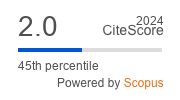Incentivizing sustainable mobility through an impact innovation methodology
DOI:
https://doi.org/10.23726/cij.2020.1055Keywords:
Sustainable mobility, Impact Innovation, Reward system, Payments, TrackingAbstract
The transport sector plays a crucial role in the social and economic development of our society. Nevertheless, it is responsible for one quarter of the global CO2 emission worldwide. Although sustainable mobility could drastically reduce transport-related emissions, its adoption is still underdeveloped. In this paper, an impact innovation methodology has been used to generate a solution that could boost sustainable mobility development by creating an efficient offline tracking method that combines transactions and GPS data. The results suggest that incentive-based solutions could increase the adoption of sustainable mobility. This study generates the basis for the development of a sophisticated algorithms, able to track mobility and to incentivize people’s sustainable habits.
References
Givoni M. & Banister D., 2010, Integrated Transport: From Policy to Practice. London: Routledge. DOI: 10.1146/annurev-environ-032310-112100
Rietveld P. & Bruinsma FR., 1998., Is Transport Infrastructure Effective? Transport Infrastructure and Accessibility: Impacts of the Space Economy, Berlin: Springer
Banister D. & Anderton K. & Bonilla D. & Givoni M. & Schwanen T., 2011, Transportation and the Environment, Annual Review of Environment and Resources, Vol. 36, pp. 247-270.
International Energy Agency (IEA). CO2 Emissions from Fuel Combustion 2018: Overview. 2018. URL: https://www.iea.org/statistics/co2emissions/).
European Environment Agency (EEA). Greenhouse gas emissions from transport. 2018. URL: https://www.eea.europa.eu/data-and- maps/indicators/transport-emissions-of-greenhouse-gases/transport-emissions-of-greenhouse-gases-11).
Transport & Environment (T&E), 2016, Europe needs to slash its transport emissions by 94% by 2050 - Effort Sharing Regulation.
Heineke K. & Kloss B. & Scurtu D., 2019, Micromobility: Industry progress, and a closer look at the case of Munich, McKinsey Center for Future Mobility
Herrador M. & Carvalho A. & Feito, F.R., 2015, An Incentive-Based Solution of Sustainable Mobility for Economic Growth and CO2 Emissions Reduction, Sustainability, 7, 6119-6148
Kazhamiakin, R. & Pistore, M. & Marconi, A. & Valetto, G., 2015, Using gamification to incentivize sustainable urban mobility”, Conference Paper.
Directive (EU) 2015/2366 of the European Parliament and of the Council of 25 November 2015 on payment services in the internal market, amending Directives 2002/65/EC, 2009/110/EC and 2013/36/EU and Regulation (EU) No 1093/2010, and repealing Directive 2007/64/EC (Text with EEA relevance) OJ L 337, 23.12.2015, p. 35–127 ELI: http://data.europa.eu/eli/dir/2015/2366/oj
Brodsky, L. & Oakes, L., 2017, Data sharing and open banking. New York: McKinsey & Co.
Systemic Design Toolkit Guide, 2019, Ellen MacArthur Foundation, URL: www.systemicdesigntoolkit.org
Brown T. & Wyatt J., 2010, Design Thinking for Social Innovation, Stanford Social Innovation Review, vol.8, No. 1, pp.30-35.
Camacho B. & Rui A., 2019, Design Education. University-industry collaboration, a case study, The Design Journal 22.sup: 1317-1332.
Zhang K., 2017, Urban mobility and location-based social networks: social, economic and environmental incentives, Doctoral Dissertation, University of Pittsburgh.
Herrador M. & Carvalho A. & Feito F.R., 2015, An Incentive-Based Solution of Sustainable Mobility for Economic Growth and CO2 Emissions Reduction
Jaffe C. & Mata C. & Kamvar S., 2017, Motivating Urban Cycling Through a Blockchain-Based Financial Incentives System, UbiComp/ISWC ’17 Adjunct, Maui, HI, USA
Ciclogreen Move and Win, URL: https://www.ciclogreen.com
Wecity website, URL: https://www.wecity.it/en/
Pin bike website, URL: https://www.pinbike.it/
Alpaydin E., 2020, Introduction to Machine Learning, Fourth Ed., MIT Press Ltd., Cambridge, Mass., United States
Saltedge website, URL: www.saltedge.com
Aland Index Solutions website URL: alandindexsolutions.com
travelandmobility. tech, 2019, URL: https://travelandmobility.tech/infographics/carbon-emissions-by-transport-type/
Downloads
Published
How to Cite
License
Copyright (c) 2020 Luca Ricci, Pierpaolo Palmieri, Angela Giulia Ruberto, Leonardo Rocchetti, Isabella Timossi, Domenico Pirrotta, Matteo Sala

This work is licensed under a Creative Commons Attribution 4.0 International License.
Authors who publish with this journal agree to the following terms:
- Authors retain copyright and grant the journal right of first publication with the work simultaneously licensed under a Creative Commons Attribution License that allows others to share the work with an acknowledgement of the work's authorship and initial publication in this journal.
- Authors are able to enter into separate, additional contractual arrangements for the non-exclusive distribution of the journal's published version of the work (e.g., post it to an institutional repository or publish it in a book), with an acknowledgement of its initial publication in this journal.
- Authors are permitted and encouraged to post their work online (e.g., in institutional repositories or on their website) prior to and during the submission process, as it can lead to productive exchanges, as well as earlier and greater citation of published work (See The Effect of Open Access).


